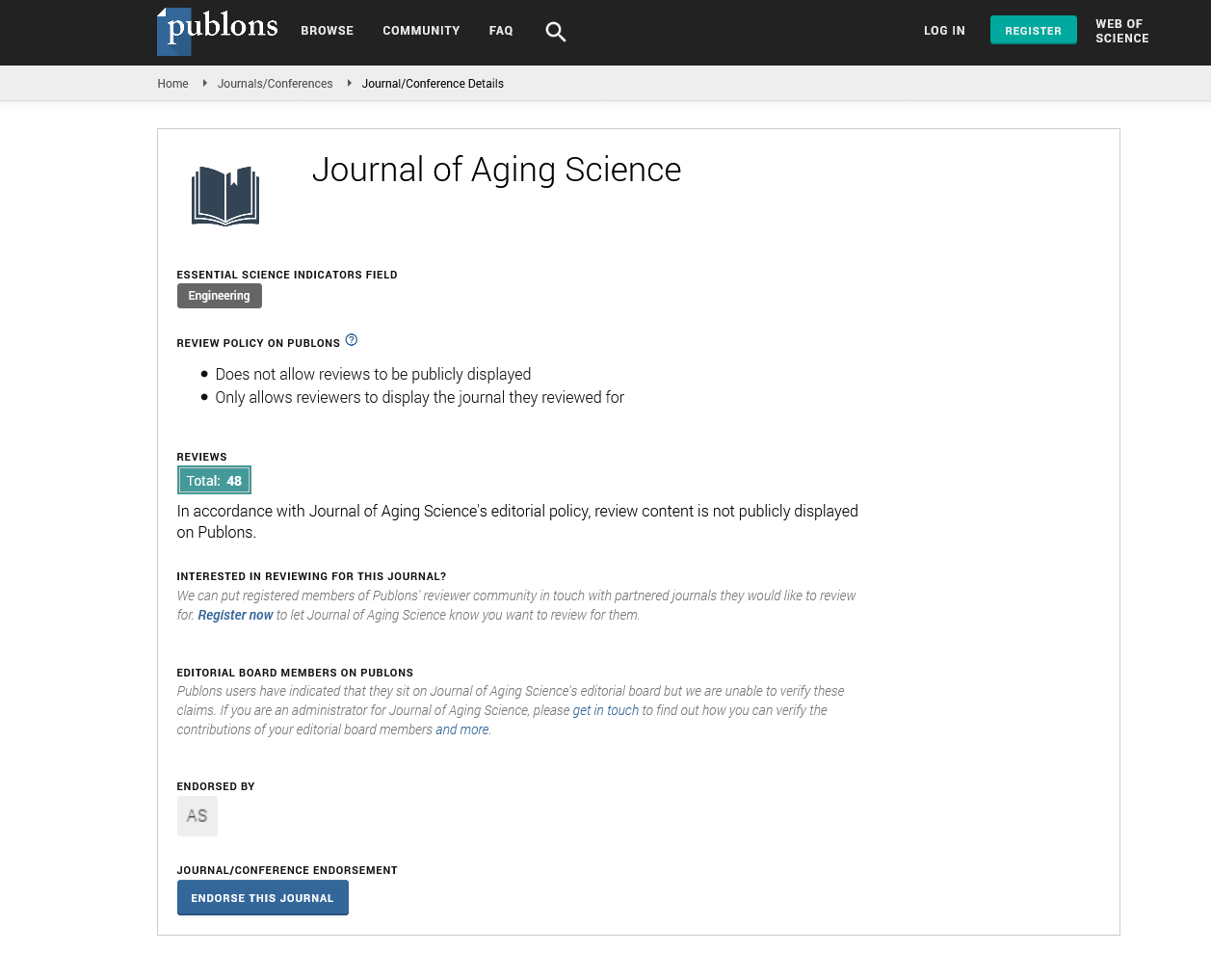Indexed In
- Open J Gate
- Academic Keys
- JournalTOCs
- ResearchBible
- RefSeek
- Hamdard University
- EBSCO A-Z
- OCLC- WorldCat
- Publons
- Geneva Foundation for Medical Education and Research
- Euro Pub
- Google Scholar
Useful Links
Share This Page
Journal Flyer
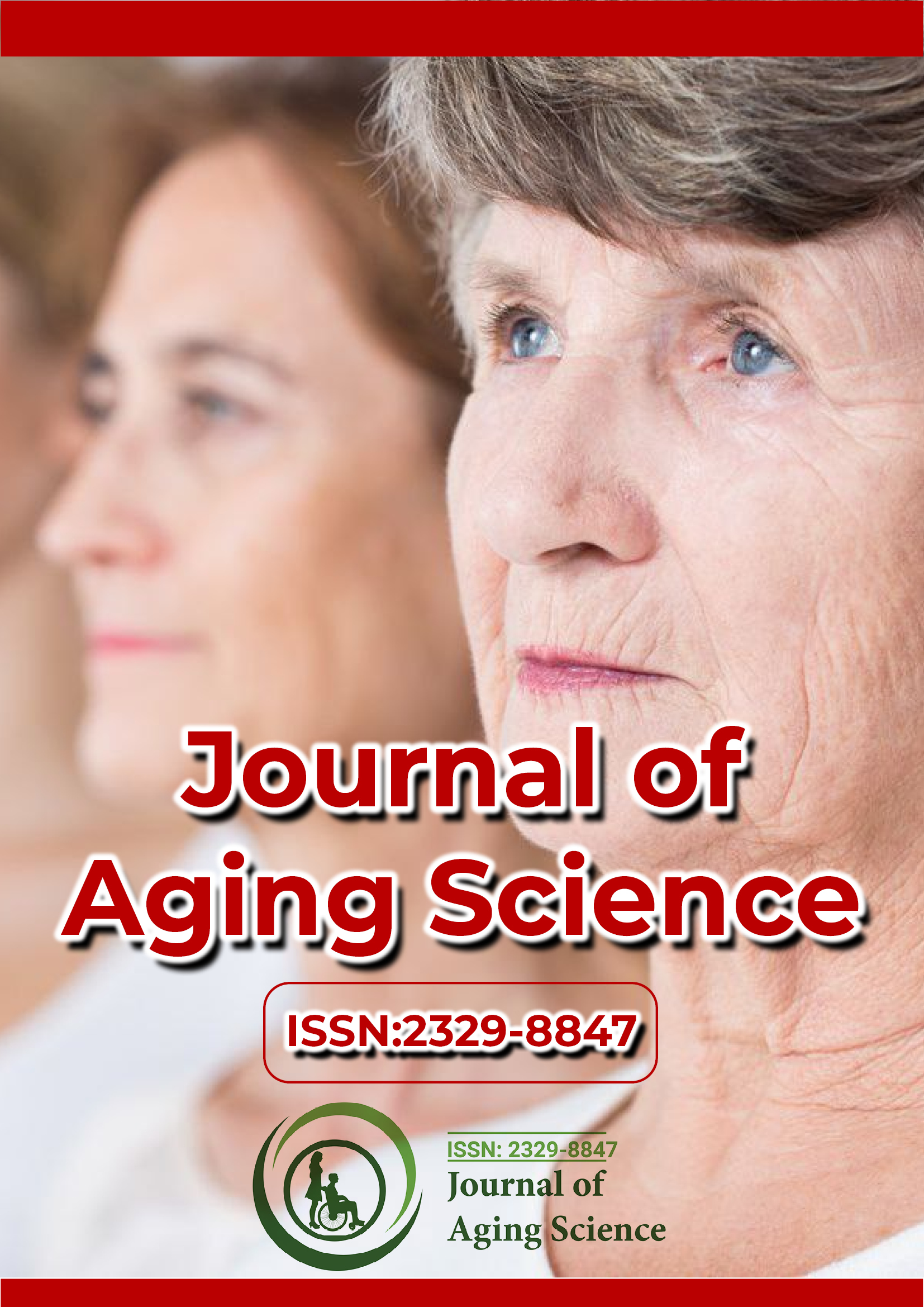
Open Access Journals
- Agri and Aquaculture
- Biochemistry
- Bioinformatics & Systems Biology
- Business & Management
- Chemistry
- Clinical Sciences
- Engineering
- Food & Nutrition
- General Science
- Genetics & Molecular Biology
- Immunology & Microbiology
- Medical Sciences
- Neuroscience & Psychology
- Nursing & Health Care
- Pharmaceutical Sciences
Research Article - (2019) Volume 7, Issue 1
Acute Effects of Tai Chi Chuan, Coordination and Aerobic Exercise on Attention in Elderly Individuals
Yasmin Pakzad-Mayer1, Jia-Tzer Jang1, Yuan-Shuo Chan2, Chia-Hui Chen1, Yueh-Chi Wang1 and Peter Karl Mayer3*2National Taipei University of Education, Taiwan
3China Medical University, Taiwan
Received: 26-Nov-2018 Published: 04-Jan-2019, DOI: 10.35248/2329-8847.19.07.201
Abstract
This study examined the effects of 3 different acute exercise modes on sustained attention in elderly adults. Twelve experienced male Tai Chi Chuan (TCC) practitioners were assigned to: TCC, coordination program and ergometer cycling. Each exercise session lasted for 30 minutes. Before and after the exercise a 14 min Continues Performance Test (CPT) was conducted to evaluate sustained attention. Results: After TCC a value for attentiveness (Detectability) improved significantly with p=0.01. Decreasing commission mistakes (p=0.06) and hit reaction time (p=0.09) showed a tendency for higher attention levels. Hit reaction time value (p=0.026) and hit reaction time standard deviation (p=0.002) reduced significantly after the coordination session. Commission mistakes decreased significantly (p=0.031) after ergometer cycling. These results demonstrate that each exercise mode influences attention markers differently; Coordinative challenging exercises are more beneficial for attention; TCC in specific for attentiveness and inhibition; and aerobic training for inhibition.
Keywords
Acute bout of exercise, Sustained attention, Inhibition, Elderly
Introduction
The recommendation from the American College of Sports Medicine and the American Heart Association of 2007 as well as the guidelines of 2010 evaluated many studies concerning health and physical exercise and they come to the conclusion that the right amount of physical activity is a key point to an active lifestyle [1,2]. But an active healthy lifestyle does not only depend on one’s physical fitness but it also depends on mental fitness. Aging is usually accompanied by physical and mental decline, especially in the older population (over 65). Cognitive ability is very important in daily life, maybe more now than before since elderly people are still taking on financial and social responsibilities [3].
This cognitive decline can be found in different areas including information processing speed, reasoning and memory [4]. Cognition describes the process of knowing and by definition refers to higherlevel functions of the brain. It includes aspects of mental processing and is very important in our daily life. Attention is also included in cognition and is one of the key-functions to higher cognitive processes, as Zimmerman and Leclercq pointed out “… attentional processes are fundamental to all cognitive skills.” (p.76). Thus, attention is crucial to every area of our life. Its function is to interact during information perception and processing with all other cognitive functions such as memory, planning, reception and orientation [5]. The cognitive decline also includes aspects of attention and some even hold age-related decline in fields of attention, such as inhibition, responsible for cognitive cutbacks [6,7].
It is generally believed and scientifically researched by the American College of Sports Medicine that physical activity can reduce age related declines; and cognitive declines [2,8]. In recent years adequate physical activities for the older population were promoted and Tai Chi Chuan (TCC) with its slow and thoughtful movements can be considered a very suitable kind of exercise. TCC is also included in Chinese medicine as a part of health promotion. Health attributed benefits for TCC are improved balance, cardiovascular fitness, and psychological and cognitive fitness [9-16]. Furthermore, Wei et al. have shown that practicing TCC for long time influences the structure in the brain [17].
TCC training is coordinative challenging and cardiovascular enhancing. Another study compared Tai Chi practitioners with older adults who were involved in regular exercise and some who were not [14]. They came to the conclusion that TCC practitioners had a better attention and memory function than the group with or without regular exercise. Assuming that TCC has an effect on attention, we wanted to see if this effect was due to cardiovascular or coordinative stimulation. Many research so far have focused on cardiovascular fitness and its influence on cognition [18]. Recently, however, another study showed that both endurance training (5 years) and TCC (5 years) improved cognitive function using Task-Switching task and event-related potential (ERP) recordings (a type of brain wave) [19].
Another research has shown a significantly better attention and memory function with the TCC practitioners in comparison to the regular exercising group and concluded that the cognitive effects might not arise from an increased blood flow [14]. It seems that more research is needed to explain these effects. One way might be to have a closer look on the acute effects on exercise. So this research is examining how an acute bout of a low intensity ergometer session differs from an acute bout of TCC. The ergometer exercise focuses on cardiovascular fitness only while TCC includes aspects of cognition, endurance and mindfulness.
Furthermore, a review done by Chang et al. pointed out that there are other mechanisms than cardiovascular that account for a better cognitive performance. Functional brain imaging data support the assumption that physical and motor fitness differentially relate to cognitive processes [12,20].
In a meta-regression analysis a small improvement in cognitive function after acute bouts of exercise (Effect Size (ES) 0,20) was found [18]. The ES, however, seemed to depend on exercise mode. For example the importance of motor skills in terms of perceptual speed, executive control and working memory was emphasized before [20]. Different studies point out that not only exercise intensity influence cognitive function, but also how cognitively demanding the exercise is [21,22]. Therefore we also included a coordinative challenging exercise to evaluate the difference between TCC and a low intensity coordinative exercise session.
Material and Methods
This study had a quantitative experimental design. Twelve subjects were recruited from a TCC club in Taipei and one in Taichung. Subjects had at least 2 years of Yang style TCC experience and were between 65 and 77 years old. Subjects first had to fill out a health history questionnaire, cognitive impairment questionnaire (Mini Mental Sate Examination -MMSE), give information about training dose and years of experience and give written consent. All subjects underwent an ergometer fitness test prior to testing sessions in order to evaluate the 2 mmol lactate threshold [23]. The World Health Organization testing protocol was used starting with 25 Watt. Workload on the ergometer was then increased by 25 Watt after two minutes of cycling [24].
Subjects then underwent three different 30 minutes long exercise sessions with pre and post evaluation of attention using the Conners’ Continues Performance Test (CPT). There was a one-week rest between the exercise sessions and they were conducted in a counterbalanced manner. The CPT measures a person's sustained and selective attention and impulsivit. It surveys 3 dimensions of attention: inattention, impulsivity and vigilance by obtaining scores on 12 separate variables (Table 1) [25].
| Variables | Unit | Details |
|---|---|---|
| Hit Reaction time (RT) | Nearest millisecond | Measure of impulsivity Atypical fast RT Measure of inattentiveness Very slow RT |
| Hit Reaction Time Standard Error | SD variable reactions | Measure of inattentiveness Consistency of response time |
| Omission | Non response to a target | Measure of inattention |
| Commission | Respond to a non-target | Measure of inattention/impulsivity |
| Attentiveness d‘ | Discrimination between target and non-targets | Measure of inattention/impulsivity |
| Hit RT Block Change | Change of RT over 5 time blocks | Measure of vigilance Positive slope: slowing RT Negative slope: quicker RT |
| Hit Standard Error Block Change | Slope of change in reaction time standard errors over six time blocks | Measure of vigilance Positive slope: RT became less consistent as the test progressed Negative slope: RT became more consistent as the test progressed |
| Variability of Standard Error | Response speed consistency | |
| Perseverations | Respond that occurs less than 100 ms after stimulus | Measure of impulsivity Anticipatory responding |
| Response Style Indicator (Beta) | Individual’s responds tendency | Higher values than average: cautious response style, try to avoid commission errors Lower values than average: more free response style, trying to response to most or all targets |
| Reaction Time by Inter-Stimulus Interval (ISI) | Change in average RT over the different ISI (1, 2 or 4 seconds) | Positive slope: slowing of RT as the time between target increases Negative slope: faster RT as the time between target increases |
| Standard Error by ISI | Change in standard error of RT over the different ISI | Positive slope : more erratic as the time between target increases Negative slope: increased consistency as the time between target increased |
Table 1: Continues Performance Test (CPT) Measures.
On a 14 inch computer the subjects were asked to focus on the letter which would be displayed on the screen in different inter-stimullus intervals (1,2 or 4 seconds) and click the spacebar whenever a letter appeared. The subjects, however, had to refrain from hitting the spacebar when the letter X was presented. The CPT lasted for 14 minutes. The standard test consists of six blocks, which are divided into three sub-blocks. 20 trials of target and non-target stimuli are presented in each sub-block. The time between letter appearances randomly changes from 1000 to 2000 or 4000 ms.
The exercise sessions were: TCC, ergometer cycling around the 2 mmol lactate threshold and a coordination session. All participants performed a 66 movements long Yang style TCC form which is used for competition around Taiwan and lasts for about 25 minutes. The coordination session focused on balance, rhythm, eye-hand coordination, arm-leg coordination and ability to differentiate.
SPSS 12.0 was used for assessment of group differences with p<0.05 and mean (±) SD, for the dependent t-test (before and after exercise programs).
Results
Twelve men (age m=69.4 ± 3.8 years) participated in this study. All of the participants completed the MMSE test without showing any impairment. The exercise modes were designed as aerobic exercises around the 2 mmol lactate threshold. The average heart rates (HR) during the three exercise programs were not significantly different from each other (Table 2).
| Subject | TCC | Coordination | Bicycle | 2 mmol HRT |
|---|---|---|---|---|
| (Ø bpm) | (Ø bpm) | (Ø bpm) | (Ø bpm) | |
| 1 | 107 | 77 | 109 | 112 |
| 2 | 89 | 93 | 115 | 109 |
| 3 | 82 | 96 | 106 | 110 |
| 4 | 75 | 81 | 82 | 74 |
| 5 | 98 | 99 | 101 | 101 |
| 6 | 98 | 88 | 111 | 111 |
| 7 | 128 | 103 | 129 | 123 |
| 8 | 115 | 87 | 113 | 104 |
| 9 | 82 | 72 | 93 | 95 |
| 10 | 100 | 89 | 103 | 117 |
| 11 | 102 | 100 | * | * |
| 12 | 82 | 91 | 87 | 86 |
| Mean | 97 | 90 | 104 | 104 |
| SD | 15 | 9 | 13 | 14 |
Notes.* Participant was not able to perform bicycle ergometer due to reduced range of motion bpm (beat per minute)
Table 2: The average heart rate measured during the different exercises and at the 2 mmol threshold (HRT) during the fitness test.
The CPT measures: Beta and Perseverations did not show any deviation from the average and are therefore not further discussed. Hit reaction time (RT) and hit RT standard error value decreased significantly after the coordination (C) session with p=0.026 and p=0.002 respectively. No significant differences between pre-test (R) and post-test (E) were found for the bicycle (B) (p=0.592) session. The TCC (T) session missed significance level with p=0.093 but showed a tendency for better reaction time (Figures 1 and 2).
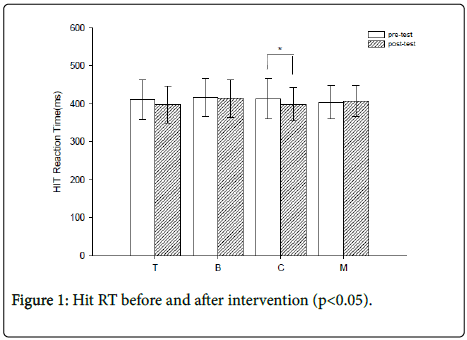
Figure 1: Hit RT before and after intervention (p<0.05).
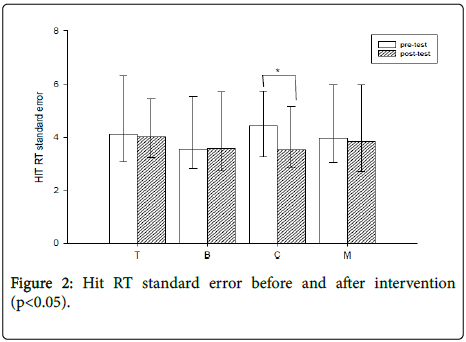
Figure 2: Hit RT standard error before and after intervention (p<0.05).
No significant changes were administered in the variability of standard error value for TCC (p=0.618), or coordination (p=0.137). Bicycle showed a tendency with p=0.069 towards an increase of variability after intervention, but missed significance level (Figure 3 and Table 3). The changes in attentiveness (Detectability or d’) are shown in Figure 4. Participants showed a significant improvement in this value after TCC intervention p=0.01, while there was no change after the other interventions (bicycle: p=0.13, coordination: p=0.11). For the measurements of vigilance, hit RT block change and hit RT block change standard error were administered, which showed no significant changes (Table 3). Bicycle performance showed a tendency with p=0.057, but missed significant level.
| TCC | Bike | Coordination | |
|---|---|---|---|
| Omission mistake | |||
| R (mean) | 1,73 | 1,3 | 2,36 |
| R (SD) | 2,28 | 2,79 | 4,11 |
| E (mean) | 0,55 | 2,1 | 1,18 |
| E (SD) | 0,52 | 5,26 | 1,99 |
| p-value | 0,119 | 0,914 | 0,203 |
| Hit RT block change | |||
| R (mean) | 0.0142 | 0.0009 | 0.0076 |
| R (SD) | 0 | 0 | 0.01 |
| E (mean) | 0.0092 | 0 | 0.0049 |
| E (SD) | 0 | 0 | 0 |
| p-value | 0.235 | 0.16 | 0.53 |
| Hit RT block change SD | |||
| R (mean) | -0.0008 | 0,0027 | -0,0075 |
| R (SD) | 0 | 0 | 0 |
| E (mean) | 0.0225 | 0,0455 | 0,006 |
| E (SD) | 0 | 0.1 | 0 |
| p-value | 0.235 | 0.167 | 0.53 |
| Variability | |||
| R (mean) | 6 | 4 | 6 |
| R (SD) | 3.9 | 2.6 | 3.7 |
| E (mean) | 6 | 6 | 4 |
| E (SD) | 2.9 | 3.4 | 2.1 |
| p-value | 0.618 | 0.069 | 0.137 |
Table 3: Change in attention markers before (R) and after (E) the 3 exercises.
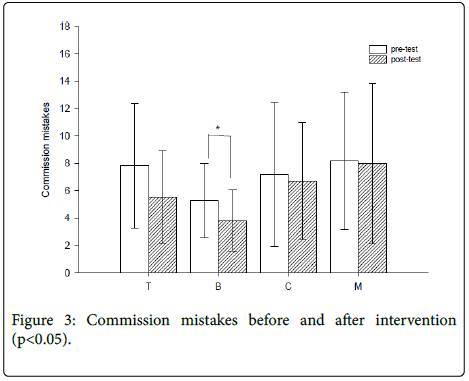
Figure 3: Commission mistakes before and after intervention (p<0.05).
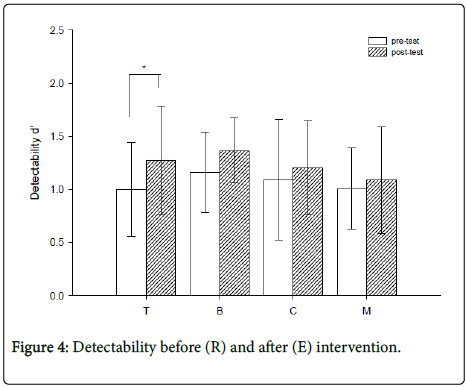
Figure 4: Detectability before (R) and after (E) intervention.
Discussion
This research focused on attention and TCC in comparison to other exercise modes. In the past, a positive relationship between cognitive functions and TCC was found [26]. This study was a randomized clinical trial with two training groups (Tai Chi and Western exercise program). TCC participants significantly improved in the Backward Digit Span Test. They interpreted their finding as an improvement of attention, concentration, and mental tracking, whereas the other training group did not show any significant changes in cognitive functions. They concluded that because TCC is a special form of body and mind training and concentration, it has a significant effect on cognitive functions. Our results support their claim and show an improvement of detectability, which is a measurement for attentiveness, after all exercise programs, but only the increase after TCC practice was significant (p=0.01). This shows that participant could better discriminate between target and non-target, also shown in the decrease of commission and omission mistakes. Therefore, practitioners were more attentive after an acute bout of TCC.
Additionally, commission mistakes, which are a marker for inhibition, showed a tendency (p=0.06) for improvement after TCC practice. An improvement of inhibition was also found after an acute bout of treadmill walking [27]. In this research the Eriksen Flanker task was used to assess inhibition in young adults. In their study no significant change in reaction time was measured after exercise. The authors concluded that acute exercise enhanced accuracy or controlling inhibition more than reaction time. Reaction time (RT) did not improve significantly after TCC practice in our study with p=0.09. However, older TCC practitioners did have a faster reaction time than the control group in another study [28]. Since there was a tendency towards better RT (p=0.09) in our study, it might be the small sample size of TCC practitioners why significance level was missed.
It has been shown before that an acute bout of coordinative exercise could enhance attention and concentration more than a non-specific physical education lesson [22]. Here, in the coordination session different bilateral coordinative abilities with different difficulties were stressed. Since TCC also includes bilateral coordination abilities, which need most attention during motor skill learning, but become automatic movements after practicing for a long time, it is possible that TCC when practiced as a novice would have similar effects on attention and concentration as a coordinative demanding exercise session.
After a 30 min bicycle exercise, the commission mistakes decreased significantly (p=0.031) in our subjects. Commission mistakes are a marker for inhibition and together with hit reaction time, a marker for attentiveness. However, the hit reaction time did not significantly improve after ergometer session (p=0.59). The improvement of reaction time seems to depend on exercise intensity [22,29,30]. In a study by Córdova et al. the most significant improvements in response time were administered for the group training at 90% of their anaerobic threshold [30]. And a bicycle ergometer training at only 60% of individual’s anaerobic threshold resulted in no cognitive improvements. Therefore, one might argue that the low intensity around (2 mmol lactate threshold) in this study might be the reason, why no improvement of reaction time was measured.
On the other hand the coordination session with a similar intensity (see HR chart), showed a significant improvement in hit reaction time. Our findings are in accordance with Pesce et al. and Budde et al., who pointed out that not only exercise intensity, but also how cognitively demanding the exercise is, have an influence on cognitive function [21,22]. In contrast to other exercise programs, which might focus on automatic motor movement, coordinative exercise programs have a higher motor demand and thus a higher prefrontal cortex motor activity [31]. Additionally to hit reaction time, hit reaction time SD significantly decreased after the coordination exercise program. Both measurements are a measure of inattentiveness. In other words, an acute coordinative demanding/new 30 min exercise program seemed to facilitate attentiveness. The assumption arises if the coordinative demanding aspect in TCC facilitates cognitive functioning, which would be even more vivid when working with novice. This could be an interesting thought for further studies.
Conclusion
Our Research showed that an acute bout of TCC had apositive influence on inhibition (commission mistakes) and inattentionvalues (detectability and Hit RT). Although significant level was onlyreached for the detectability values, the other values showed atendency. The other exercise programs on the other hand showeddifferenteffects. An acute coordination program could improvereaction time (hit RT and hit RT SD) significantly.The bicycleprogram on the other hand could improve inhibition (commissionmistakes) but not inattention (variability) values, which became worse.It seems that an acute bout of TCC as a special form of mindfulexercise can enhance attention in different ways than other exerciseprograms. To sum up, it seems that TCC is a special kind of exercise,which positively influences attention. From our study these positiveeffects did not solemnly seem to rely on cardiovascular or coordinativefactor but must be evaluated further. A limitation to this study is thesmall sample size.
REFERENCES
- Haskell WL, Lee IM, Pate RR, Powell KE, Blair SN, et al. (2007) Physical activity and public health: Updated recommendation from the American College of Sports Medicine and the American Heart Association. Med Sci Sports Exerc 39: 1423-1434.
- Gordon NF, Pescatello LS (2010) ACSM’s Guidelines for Exercise Testing and Prescription, Thompson W R (Ed). 8th Edition Lippincott Williams & Wilkins, Philadelphia, USA.
- Salthouse T (2012) Consequences of age-related cognitive declines. Annu Rev Psychol 63: 201-226.
- Salthouse T (2009) When does age-related cognitive decline begin? Neurobiol Aging 30: 507-514.
- Zimmermann P, Leclercq M (2002) Neuropsychological Aspects of Attentional Functions and Disturbances. IN: Leclercq, M. and Zimmermann P (Ed): Applied Neuropsychology of attention: Theory, Diagnosis and Rehabilitation. Psychology Press.
- Quigley C, Andersen SK, Schulze L, Grunwald M, Müller MM (2010) Feature-selective attention: Evidence for a decline in old age. Neurosci Lett 474: 5-8.
- Van der Linden M, Collette F (2002) Attention and normal Ageing. IN: Leclercq M, Zimmermann P. (Eds): Applied Neuropsychology of Attention: Theory, Diagnosis, Rehabilitation. Psychology Press. London.
- Hillman CH, Erickson KI, Kramer AF (2008) Be smart, exercise your heart: exercise effects on brain and cognition. Nature 9: 58-65.
- Gatts S K, Woollacott M H (2007) How Tai Chi improves balance: Biomechanics of recovery to a walking slip in impaired seniors. Gait Posture 25: 205-214.
- Lan C, Chen SY, Lai JS, Wong MK (2013) Tai Chi Chuan in Medicine and Health Promotion. Evid Based Complement Alternat Med 2013: 1-17.
- Zheng G, Li S, Huang M, Liu F, Tao J, et al. (2015) The Effect of Tai Chi Chuan Training on Cardiorespiratory Fitness in Healthy Adults: A Systemati Review and Metat-Analysis. PlosOne 10: e0117360.
- Chang YK, Nien YH, Tsai CL, Etnier J L (2010)Physical Activity and Cognition in Older Adults: The Potential of Tai Chi Chuan. J Aging Phys Act 8: 451-472.
- Liu Y, Mimura K, Wang L, Ikuta K (2005) Psychological and Physiological Effects of 24-Style Taijiquan. Neuropsychobiol 52: 212-218.
- Man DWK, Tsang WW N, Hui-Chan CW Y (2010) Do older T’Chi practitioners have better attention and memory function? J Alternat Complement Med 16: 1259-1264.
- Kuramato AM (2006) Therapeutic Benefits of Tai Chi Exercise: Research Review. Wisconsin Med J 105: 42-46.
- Wayne PM, Walsh JN, Taylor-Piliae RE, Wells RE, Papp KV, et al. (2014) Effect of Tai Chi on Cognitive Performance in Older Adults: Systematic Review and Meta-Analysis. J Am Geriatr Soc 62: 25-39.
- Wei GX, Dong HM, Yang Z, Luo J, Zuo XN (2014) Tai Chi Chuan Optimizes the Functional Organization of the Intrinsic Human Brain Architecture in Older Adults. Aging Neurosci 6:74
- Lambourne K, Tomporowski P (2010) The effect of exercise-induced arousal on cognitive task performance: A meta-regression analysis. Brain Res 23: 12-24.
- Fong DY, Chi LK, Li F, Chang YK (2014) The benefits of endurance exercise and Tai Chi Chuan for the task-switsching aspect of executive function in older adults: an ERP study. Aging Neurosci 6: 295.
- Voelker R, Godde B, Staudinger U (2010) Physical and Motor Fitness are Both Related to Cognition in Old Age. Eur J Neurosci 31: 167-76.
- Pesce C, Cereatti L, Forte R, Crova R, Casella R (2011) Acute and chronic exercise effects on attentional control in older road cyclists. Gerontol 57: 121-128.
- Budde H, Voelcker-Rehage C, Pietraßyk-Kendziorra S, Ribeiro P, Tidow G (2008) Acute coordinative exercise improves attentional performance in adolescents. Neurosci Lett 441: 219-223.
- Mader A, Lisen H, Heck H, Philippi H, Rost R, et al. (1976) Zur Beurteilung der sportspezifischen Ausdauerleistungsfaehigkeit in Labor. Sportarzt und Sportmedizin, 27: 80-88.
- Rost R (2005) Sport-und Bewegungstherapie bei Inneren Krankheiten. Deutscher Ärzte-Verlag. 2005
- Conners KC, MHS Staff (2009) Conners’ Continuous Performance Test (CPT II). Version 5 for Windows Technical Guide and Software Manual. Multi Health System Inc, Toronto, Ontario, Canada.
- Taylor-Piliae RE, Newell KA, Cherin R, Lee MJ, King C, et al. (2010) Effects of Tai Chi and Western Exercise on Physical and Cognitive Functioning in Healthy Community-Dwelling Older adults. J Aging Phys Act 18: 261-279.
- Hillman CH, Snook EM, Jerome GJ (2003) Acute cardiovascular exercise and executive control function. Int J Psychophysiol 48: 307-314.
- Kwok JC, Hui-Chan CW, Tsang WW (2010) Effects of Aging and Tai Chi on Finger-Pointing Toward Stationary and Moving Visual Targets. Arch Phys Med Rehabil 91: 149-153.
- Kashihara K, Maruyama T, Murota M, Nakahara Y (2009) Positive Effects of Acute and Moderate Physical Exercise on Cognitive Function. J Physiol Anthropol 28: 155-164.
- Córdova C, Silva VC, Moraes CF, Simões HG, Nóbrega OT (2009) Acute exercise performed close to the anaerobic threshold improves cognitive performance in elderly females. Braz J Med Biol Res 42: 458-464.
- Serrien DJ, Ivry RB, Swinnen SP (2006) Dynamics of hemispheric specialization and integration in the context of motor control. Nat Rev Neurosci 7: 160-166.
Citation: Pakzad-Mayer Y, Jang J-T, Chan Y-S, Chen C-H, Wang Y-C, et al. (2019) Acute Effects of Tai Chi Chuan, Coordination and Aerobic Exercise on Attention in Elderly Individuals. J Aging Sci 6: 201. doi: 10.35248/2329-8847.19.07.201
Copyright: © 2019 Pakzad-Mayer Y, et al. This is an open-access article distributed under the terms of the Creative Commons Attribution License, which permits unrestricted use, distribution, and reproduction in any medium, provided the original author and source are credited.
